physician technology
Data Analytics and Physician Training

Healthcare changes fast, case in point, when the number of physicians using electronic health records (EHRs) rose from 9 percent in 2008 to
more than half years later. However, physician training does not always keep up, especially when it comes to the transformations resulting from the computerization of patient data.
Sanders et. al pointed out the move from data collection to sharing and, most recently, analytics – or the recognition and communication is about finding meaningful patterns. In this recent phase of computerization, physicians, hospitals, and institutions use its massive data sets to improve care coordination, education, and quality. Changes in physician training are especially important to supporting the latest innovations and fully connecting every aspect of health care systems.
The Dangers of Big Data
The main problem with the rising ocean of big data is that, by definition, its volume and diversity resists available software and hardware. Reports show that data in the American healthcare system has already reached 150 exabytes and will soon move to the zetabyte of 10 to the 21st power gigabytes. Analytics are key to finding meaning within these fast-growing stores of information, but some very real problems exist.
- Doctors are not fully trained in analytics.
- The amount of data and time to analyze it strains experts.
- Traditional training focuses on individuals vs. populations.
- As Guyatt et al show, the education system is decentralized with no standard definition of concepts like evidence or evidence-based practice.
To address these issues, medical training must emphasize and centralize training to focus on populations. Otherwise, clinicians risk missing the opportunity to rise above the sea of big data – and improve care, reduce costs, and save lives in the process.
The Importance of Training Physicians
Education leaders should be aware of and adapt curricula to the labor market. However, as pointed out in Population Health: Creating a Culture of Wellness, the system’s flaws perpetuate the industry’s failures. New programs like the University of Wisconsin School of Medicine and Public Health’s preventive medicine residency have students learn about every sector of the industry. As a result, they are not only better prepared to serve populations rather than individuals, but they can also easily coordinate a team of care providers. As Marc Triola of NYU’s School of Medicine points out, physician training in data literacy is essential because they must be able to use data to improve care while continuously learning about new trends. Educating clinicians in these fields will thus ensure that they are prepared to provide care no matter the changes to come.
Connecting the Care System
Fundamentally, physician training programs should create a clear understanding of the interconnected nature of healthcare systems. According to Health Professions Education: A Bridge to Quality, a competency-based would need to focus on the five following areas:
- Delivering patient-centered care,
- Working in interdisciplinary teams,
- Relying upon evidence-based practice,
- Ensuring quality improvement, and
- Using informatics.
Training should be targeted to provide relevant experiences in medical school, residency, and beyond. However, defining these competencies would be most important in oversight and accreditation, where leverage could be gained in pressuring educational institutions and national professional organizations.
Fundamentally, competency-based education can help clinicians adapt to ever-changing care systems. Challenges likely include limited resources, data access, and collaboration between universities and hospitals. However, shifting to a new model will be essential to educating the medical professionals of the future in synthesizing ever-more reliable data, including resources like monitoring via mobile apps. Bringing together the various sectors of healthcare in this way will likely start by establishing a common language of key terms – with data analytics near the top of the list.
—
Did you enjoy this article? Would you like to subscribe to read more like it?
![]()
Using Mobile Healthcare Apps to Obtain a Full Patient Story

Use of smartphones and wearable devices has skyrocketed in recent years. In fact, they are being used for multiple purposes including: portable monitoring, access to patient portals, and the use of health applications. A recent survey of 8,000 consumers showed that 33 percent rely upon mobile healthcare apps today versus only 16 percent in 2014. Patients’ using wearables doubled during that time, as well, though they mostly used apps for fitness (59%) and diet (52%). These programs represent an incredible opportunity when used as part of a larger healthcare plan. Mobile healthcare apps specifically allow for continuous monitoring and assessment and so help clinicians provide more personalized care.
Growing Potential
Smartphones contain remarkably powerful computers, cameras, microphones, sensors, and touch-enabled displays. Patients also carry them at all times, so smartphones and wearable devices like Fitbit, Jawbone, and the Apple Smartwatch are ideal for unobtrusive data collection in real time. For instance, Microsoft Band includes a heart rate monitor, 3-axis accelerometer, and sensors for skin temperature and ultraviolet light, among others.
However, most mobile healthcare apps remain focused on personal health metrics, with 110,000 fitness apps of 165,000 total health-related ones in a survey by IMS’s Institute for Healthcare Informatics. As another study on endocrine disease apps also notes, other kinds of support like references or medication tracking get overlooked. Furthermore, wearables and apps remain outside the healthcare system, without a way to integrate into electronic health records (EHR). Forging such connections will give clinicians access to a powerful resource – a continuous flow of patient biometrics.
Getting the Full Story
Incorporating apps fundamentally helps physicians understand a patient’s lifestyle. Accordingly, a Manhattan Research survey showed that over a third of physicians recommended mobile health apps to patients in the past year. Examples of mobile healthcare apps and wearables include:
- The popular Fitbit exercise tracker and sleep monitor,
- Apps that store and send notifications about medical history,
- Medication management apps that schedule and remind,
- Consultation apps with communication and remote consults,
- Glucometers and related reading apps for diabetics,
- Mental health apps that track disorders and provide support,
- And apps that deliver real-time feedback on adherence.
Although data from these apps can be transferred directly to a physician’s office, patients are likely more comfortable sharing in groups or during individual visits. All of the above offer one more entry point into a patient’s experiences, especially in managing the long-term difficulties of chronic disease.
Improving the Quality of Care
Physicians and patients alike benefit from using mobile healthcare apps to reduce healthcare costs in a convenient format that ensures timely access to care. Patient engagement and adherence rise with app use, too. In particular, patients are far more likely to stick to their diets, exercise routines, medication schedules, and check-up appointments with apps as regular support. At the same time, hospitalization rates and emergency room visits drop with improved communication between medical team members and better care coordination. One research study showed that mobile apps and better communication dropped readmission rates by 92 percent, while emergency room visits dropped 87 percent. The end result of app use is thus improved outcomes and overall quality of care.
In the future, mobile healthcare apps may be powerful enough to diagnose and prevent conditions like heart disease before they develop. In the meantime, despite their many benefits, they still lack clear evidence of clinical effectiveness. As a result, apps require clearer review by institutions like the Food and Drug Administration (FDA) to enable their prescription. No matter what the future brings, mobile apps must be integrated into a well-designed and coordinated care process to help patients and physicians together attain their goals for better health care.
—
Did you enjoy this article? Would you like to read more like it? If so, then consider subcribing to our weekly blogs.
![]()
The Relationship Between Mobile Healthcare Apps and Physician Visits

The internet has changed everything. It wasn’t that long ago when patients relied exclusively on physicians for healthcare advice, diagnosis and treatment. Today, however, an increasing and alarming number of people are turning to mobile healthcare apps for healthcare expertise.
And it could be dangerous.
According to the fourth annual study on mHealth app publishing conducted by Research2Guidance, there are currently more than 100,000 healthcare apps available to both Apple and Android users. According to the study’s authors, it’s estimated that 1.5 billion people around the world will have downloaded a healthcare app by 2018.
Many of those who use mobile healthcare apps cite convenience as their top reason for turning to their smartphones for healthcare information. They like having access to their medical records, the ability to make appointments with the swipe of a finger and the plethora of information about medication, symptoms and preferred treatments. Others use mobile healthcare apps to track their diets, exercise habits and sleep. Most people consider mobile healthcare apps to be incredibly useful.
Physicians, however, should be wary of the way their patients use the apps.
One study published in 2013 found that the average American spent about an hour online each week searching for healthcare information. While many search for general information about allergies and treating the common cold, others seek information related much more serious conditions—and then accepted what they found online as undisputed healthcare truth.
The result, according to research conducted by the Pew Research Center, is that only about half of all the people who looked for and found healthcare information online actually followed up with their physicians.
This trend puts both patients and physicians in precarious positions.
While people are increasingly using and trusting mobile healthcare apps, their faith in physicians is in a downward spiral. A recent study found that only about 23 percent of Americans have “a great deal” of confidence in the country’s healthcare system, and a disappointing 58 percent say that doctors can be trusted.
The challenge for physicians is to embrace the fact that mobile healthcare apps are not going away and find a way to help their patients understand how to use them effectively, without doing harm. In other words, physicians need to leverage the power of the internet to engage patients in their care and treatment plans. Here’s how:
Educate
As with any app, there are those mobile healthcare apps that are reliable and there are those that should not be trusted. For this reason, it is important that physicians familiarize themselves with apps that are both useful and accurate—and then share those apps with patients.
At the very least, physicians will know from which sources their patients are getting their information, which is the first step towards ensuring that patients are not taking bad advice.
Engage
Patients are increasingly being asked and expected to take more responsibility for their health and care. Hence, they many turn to apps for information.
Physicians can leverage this trend by encouraging patients to share information about their use of mobile healthcare apps during office visits. Engaging patients in honest, authentic conversations about online information—whether treatment options or ways to deal with symptoms—can actually lead to more accurate diagnoses and care that is more personalized.
Embrace
Many apps can actually make physicians’ lives easier. They assist with the scheduling of office visits, provide patients with access to their medical records and allow patients to ask questions.
Physicians should identify the apps that make the most sense to their practices and embrace them. Patients are using apps anyway, so physicians should use them to their advantage, too.
—
Did you like this article? If you’d like to read others like it, subscribe to our blog!
![]()
2016’s Top New Apps for Physicians

What if you could get your hands on a simple piece of technology that could simplify your daily life and help build your practice? Imagine if a simple swipe across the screen of a smartphone could connect you with a network of physicians from around the world who are available to discuss complex clinical cases in a secure online location?
Wouldn’t you love to have the ability to connect directly with patients from anywhere in the world, improving outcomes and enhancing patient satisfaction?
You can, thanks to mHealth.
“mHealth” is short for “mobile health. It refers to the use of smartphones, tablets and other wireless technologies in medical care.
It’s a growing industry that’s affecting almost everything about the healthcare industry. Patients are using mHealth to self-diagnose, manage medications and schedule appointments. Smart physicians are using it to enhance the level of care they provide and connect with new patients.
Practices are using it to make money.
According to data from Grand View Research, mHealth has the potential to become a $50 billion industry by 2020–and much of the growth will be driven by apps.
Yes, mHealth and apps are here to stay, and enterprising physicians are learning how to use them to their advantage. Here’s a look at some of the most innovative and practical new apps for physicians that you need to know about:
MedShr
MedShr is a mobile app developed by doctors, for doctors. It allows physicians from around the world the ability to connect with verified medical professionals in secure online locations to discuss cases by specialty.
The app’s goal is to make it easier for physicians to expand their professional networks, share expertise to improve patient care and learn from peers and specialists to pass exams.
Users of MedShr can also share photos and videos, which makes discussing complex cases more engaging and useful.
MedShr is available for free on both iTunes and Google Play.
Care-App
The Care-App takes telemedicine to new levels. Telemedicine, of course, has been shown to reduce hospital visits, reduce healthcare costs and deliver healthcare services to patients who might otherwise not be able to receive them.
The Care-App makes it possible for physicians and patients to have private, secure communication over Facebook, which is the largest social media platform in the world. It leverage the power of video connectivity to make the interaction more personal and allow doctors to see some symptoms and problems.
It also includes a tele-stethoscope device, which connects to the smartphone’s headphone jack, allowing for even more thorough exams.
This app is a great way to stay connected with patients who might not otherwise follow through on follow-up appointments, properly manage their medication or follow their treatment plans. It allows doctors to stay connected with current patients and expand their practice by offering the service to new patients.
Learn more about the Care-App.
CASP
Information is power, especially when it comes to the latest accessing the latest medical literature. CASP (Critical Appraisal Skills Program) allows you to easily find, read and critically appraise the latest published papters.
It provides a systematic approach to analyzing papers through electronic document management (EDM), which can help you identify information that can improve your practice and improve patient outcomes.
You can learn more about CASP and the power it delivers on iMedicalApps.com. CASP can also be downloaded through iMedicalApps, although free registration is required.
Learn more about mHealth
If you want to the learn more about leveraging the incredible power of mHealth to build your practice, make your life easier and improve outcomes, visit the FDA’s site about mHealth apps.
—
Are you interested in networking online without apps? Consider physician forums!
![]()
Top Tier LinkedIn Groups for Healthcare Professionals

LinkedIn groups for healthcare professionals are an effective and strategic professional tool for physicians, nurse practitioners and physician assistants to utilize. LinkedIn provides a wide range of networking options and enables healthcare professionals such as yourself to connect to peers, patients, researchers, recruiters or employers.
One of the important benefits of using LinkedIn is connecting with other healthcare professionals that may be outside of your area of expertise or geographic location. Another benefit is having a social media tool for potential patients to seek you out is valuable to broaden your community. And finally, in the digital world, potential employers or recruiters frequently use LinkedIn to explore professionals such as reviewing a curriculum vitae or determining your connections with educational facilities or your research network.
Whatever your reasons are for utilizing LinkedIn groups for healthcare professionals, becoming familiar with the tools it offers is necessary. LinkedIn allows you to connect to different groups in your professional area of expertise or in areas that you would like to network with. The following are several groups that any healthcare professional would benefit with becoming connected to.
- One of the larger groups on LinkedIn to access in order to network for employment is, IHR, which is a group for healthcare or pharmaceutical professionals. This group would allow a healthcare professional to network with over 300,000 people to find new employment.
- Healthcare Executives Network, with over 200,000 members would allow you to connect with executives, managers and other healthcare professionals. This group describers their network as “sharing best practices, collaborate and build lasting relationships”. This group could certainly provide you with education, support and an ability to network with the healthcare industry.
- Healthcare Industry Professionals Group, with over 70,000 members is a group seeking to network with a wide range of healthcare professionals. This group was created in order to “discuss innovation and the technology and regulatory changes that are impacting the industry”. There are always changes in regulations, technology and health insurances so being connected to groups that regularly discuss and share experience is useful for medical professionals.
- Networking for Healthcare Professionals, with 6,700 members a smaller number comparatively speaking but boasts an effective group for medical professionals. This group describes their purpose to “exchange ideas…learn everything you need to know upon completing your residency or fellowship and beginning your career.” This group is associated with MD Preferred Services which is a resource for medical professionals to “leverage their time and resources.”
- Medical Devices Group, with over 300,000 members is a LinkedIn group of medical professionals with 41 different subgroups across a wide range of specialties and geographic locations. This group seeks to provide networking, medical content and opportunities to connect in person. A valuable and wide ranging group for healthcare professionals.
There are thousands of LinkedIn groups for healthcare professionals and millions of members on LinkedIn so whatever your medical area of expertise there is likely a group that would support your professional plans. Go ahead, starting linking up today!
—
Want to add forums to your list of physician tools? If so, make sure to check out our free resource below.
![]()
Roundup! Major Medical Advances of the 20th Century

At the turn of the 20th century, over 10% of newborn babies were not expected to survive until their first birthday. Even after that crucial first year, the average life expectancy of an American was less than 50 years. However, thanks to certain advances, the resources available to us to treat patients have sharply improved the longevity and quality of life of Americans. Now, the infant mortality rate is 60 times better than it was in 1900, and our life expectancy is upwards of 79.
The health breakthroughs and major medical advances of the 20th century were so dramatic that if we could mirror the same catalyst in other cultural arenas (such as politics and economics), many of our world’s greatest problems would be solved. Let’s examine a few of the most important major medical advances of the 20th century:
In 1895, a German professor named William Roentgen captured the first x-ray image, a photo of the bones in his wife’s hand. His realization that electromagnetic radiation could transfer through soft tissue and create images of the inside of the human body quickly swept through the medical industry. By 1913, medical x-ray machines became common place in hospitals across the world. X-ray technology has changed the medical world by providing doctors with a non-invasive way to make a diagnosis and treat a patient. We also use Roentgen’s discovery of radiation to treat of some of humankind’s most severe diseases, such as tumors, blood clots, and other blockages.
Approximately 9.3% of the population lives with diabetes. Before the development of insulin, diabetes was considered a lethal disease; the only treatment option physicians had was diet modification, which only served to prolong life by a few years. In the 1920s, a team of doctors realized that the insulin hormone, which malfunctioned in diabetic patients, could be drawn from the pancreas of animals and effectively administered to humans to control blood sugar. This development, along with responsible doctors’ insistence on an open patent that ensured no diabetic patient would be robbed of the life saving drug, has saved millions of lives over the last century and definitely earned its place on our list of major medical advances of the 20th century.
The first official vaccination actually took place long before the 20th century, in 1796, when an 8-year-old boy was inoculated against smallpox through exposure to cowpox. However, as health professionals, we can all agree that the development of vaccinations throughout the 20th century has had one of the greatest positive impacts on public health. Through the support of major medical foundations, such as the the World Health Organization, vaccinations can be thanked for globally eradicating smallpox in 1977. As vaccinations have become common practice, illnesses that were once the equivalent of a death sentence to children, such as measles, mumps, whooping cough, polio, and rubella, are now nearly non-existent.
There is no question as to why penicillin is a top candidate on our list. At the dawn of the 20th century, infectious disease was the leading cause of death, accounting for one-third of all fatalities. In 1928, Alexander Fleming accidentally contaminated a petri dish, and then noticed that the resulting mold prevented the growth of the bacteria. This “Eureka!” moment led to the development of antibiotics that has saved an estimated 20 million lives.
—
Elliot Health System would love to hear your input on this subject! What medical breakthrough in the last 100 years has been the most influential in your practice? Please send us your feedback.
![]()
Internal Medicine Tools for the Savvy Physician
There are a number of valuable internal medicine tools for physicians that can streamline your business practices while maximizing your productivity and earnings, many of which are ACP (advance care planning) softwares or diagnosis tools for major illnesses. Many of these apps have been rated highly according to GRADE (Grading of Recommendations Assessment, Development, and Evaluation) standards, which determine their overall influence on the outcomes of cases and patient record availability. Listed below are a few of the best internal medicine tools on the market today.
GRADEpro GDT
GRADEpro GDT is a user friendly, universal web-based option for outlining and supplying information that assists you in making diagnoses and formulating treatment plans. It builds compact summary charts for organized reviews and healthcare examinations, in addition to effecting the establishment of medical practice regulations and other files that make public health policy recommendations. This internal medicine tool allows you to easily monitor the entire procedure of developing treatment plans.
It allows you to handle your tasks as a group with the identification and management of possible conflicts of interest, the creation of your project’s scope, the creation and organization of questions or lists that identify outcomes of interest and rates their values, and the preparation of evidence profiles according to the GRADE Evidence to Decision platform. It also backs up all of your computer work on a secure web-based storage server, enabling you to communicate your findings to your team and to work together on the case from anywhere on earth.
Essential Evidence Plus
EE+ is a highly effective and complete medical diagnosis system that works data from 9,000 diagnoses into your own medical workflows. This ingenious physician’s application contains more than 13,000 topics, regulations, abstracts, tools, pictures, and diagnoses that cover the most prevalent ailments, diseases, and surgical procedures that physicians encounter on a daily basis.
All recommendations carry an evidence rating that appropriately grades their value based on all evidence found in any pertinent records. On top of that, EE+ is closely connected to Cochrane Systematic Review abstracts, in addition to the complete text of these reviews with a Cochrane Library membership, which ensures that you have permanent access to the best quality evidence-supported medical information in existence.
ACP Practice Advisor
ACP Practice Advisor is a series of modules that addresses certain aspects of medical practice, including providing patient background information. The Practice Biopsy is a self-assessment tool which sets up a baseline score in assessing all ACP Practice Advisor users. Your staff members may work on the Practice Biopsies independently or in small clusters, at any time and in any sequence. The tool creates a case study for each practice as it finishes the ACP Practice Biopsy and effects adjustments based on the provided resources.
It has record-keeping features to help monitor the progress of each project as time passes, recognizing possibilities for improvement by comparing your clinic to others. Its virtual resource library integrates books, articles, videos, tutorials, easy-to-download guides, policy templates, and an assortment of apps from every module into a browsable compendium.
Other Internal Medicine Tools
Aside from the above-listed resources, there are a number of additional internal medicine tools and apps that simplify the complex process of diagnosing and treating patients. A few of these popular and efficacious internal medicine tools are the RPA Advance Planning Tool, the ACP Decisions app, the palliAGED Decision Assist tool, INTERACT tools and templates, and the Consumer Toolkit for Healthcare Advance Planning offered by the American Bar Association.
—
![]()
5 Physician Forums You Should Participate In

Most people expect that health care providers enjoy using social media for personal purposes. Fewer people realize that over two thirds of doctors use professional social networking sites. Here are five physician forums that you should participate in.
SERMO
SERMO is a community dedicated to creating a safe space for physicians. SERMO screens applicants and only approves practicing doctors. While members are able to choose to use their names, most prefer to use an anonymous screen name.
One of SERMO’s unique features is a crowdsourcing platform called SERMOsolves. Doctors are able to collaborate to find answers to complex problems. Many of their members use this feature from the bedside to find quick resolution.
MoMMD
Over time, more and more women have entered the field of medicine. Female doctors are as capable as male, but may face challenges unique to women. MomMD is an online community for female doctors, residents, and students. Their forum lets women give each other support through these challenges.
Doximity
Doximity is another popular medical social media site. With a membership of 60% of U.S. doctors, networking with other doctors is simple. Members work together to identify and treat complex medical conditions. The physician forums are not limited to medical collaboration. Doctors discuss the business end of running medical practices. They are also used to find and fill available medical positions.
As well as physician forums, members have access to a library of articles for your field of practice. These articles are often available before the official publication date. Additionally, reading these can earn CME credits. Doximity will track your CME credits for you.
The Physician Executives Forum
Later in their careers, many doctors find themselves in managerial positions. Running a business requires responsibilities that medical school did not prepare them for. These unique needs are why The Physician Executives Forum was created.
When facing this type of transition, networking with other doctors is critical. The Forum gives physicians the opportunity to discuss what they are learning. Subjects often covered include leadership skills, balancing medical and administrative needs or communication between interdisciplinary members of your team. Additionally, The Forum provides education in practical managerial skills and necessary resources.
The PANDAS Physicians Network
Specialized physician forums give doctors access to unfamiliar information. One example is The PANDAS Physicians Network (“PPN”). PPN is an organization that exists to help doctors to understand PANDAS and PANS.
Doctors use the forums to discuss how to use cutting edge research and remedies. PPN collects data about the patients for future studies. Additionally, PPN is the hub for active fundraising for this medically complex syndrome.
—
Doctors devote years of their lives to education. After graduation, they spend decades caring for their patients. Physicians are always striving to provide a better quality of life. These physician forums can make yesterday’s dreams a reality for your patients today.
Are you interested in sharing these physician forums with others? Check out our free Physicians Physician Forum Guide by clicking below.
![]()
5 Best Physician Tools for Busy Doctors

Treating your patients and running your practice will keep any doctor constantly busy and give them very little free time. Luckily we live in an age where there are plenty of resources available to help you to be productive and to manage your time. These resources include apps for your phone, software and other physician tools available to you on the internet.
An app that is essential for productivity and time management is called Epocrates. This particular app has many uses. The main use for looking up drug details and drug interaction information, but there are other uses as well! It can be used to look up other doctors for referrals and can even be used to calculate patient information. This includes such things as BMI and other important information that may be required to give to the patient.
Beyond your patients, you also have to manage your practice including scheduling and payroll. Luckily, there are now programs designed to make handling both of these things much easier. One such program is called Shift Planning. The entire setup of Shift Planning is meant to make setting schedules and paying your employees both quick and easy. And, when your day is booked, these thing are greatly appreciated.
If you’re looking for more specialized help with maintaining your education, keeping up on the newest research and finding resources such as insurance for medical personnel then the American Medical Association website is where you will want to turn. Their website has sections for each of these topics and much more!
Have you ever just wanted to connect to other physicians? Knowing that the person you are speaking with may have dealt with the situation you are dealing with is a valuable resource. Luckily, the doc2doc Forums exists and provide exactly that form of service. This tool is an excellent way to create new connections and network with others who do the same type of work that you do.
Sometimes you need specific information about other providers. An excellent resource if you need a National Provider Identifier (NPI) number is the NPPES NPI Registry. This registry allows you to quickly search a database to locate these numbers as you need them.
Whatever you are trying to accomplish with your practice, there are physician tools available for you. You just have to know where to look find them and decide which tools would be the most beneficial to you.
—
Do you want a visual guide so that you can remember these resources? We’ve generated one just for you!
![]()
5 Best iPad Apps for Physicians

There is no denying that mobile technology has changed the way business is done in the world of healthcare, and continues to do so at a rapid pace – particularly for physicians on many levels, from education to reference to visual aid to personal health monitoring. Nowadays, you are able to make an appointment, fill a prescription, search through a database, tour a hospital virtually, keep in touch with friends and family, order delivery and much, much more, all with just a few flicks on a screen! The same ease of use we are all becoming accustomed to is also extending to doctors and patients inside hospitals. For example, one of the more popular uses of mobile devices is as a patient education tool.
But, there are a ton of apps out there, medical and otherwise. So, how do you know which ones are worth downloading and using, as a physician? We have put together a list of the 5 best iPad apps for physicians. Check it out!
The Top Five Medical iPad Apps for Physicians
- My Chart Bedside – FREE ios ANDROID. My Chart Bedside is a useful tool for those who may need help getting their point across. This app gives doctors an effective way to communicate with their patients and also provides useful information regarding their care plan. This allows patients to feel more involved in their care. According to Physician’s Practice, “If you are working with a customer who is a little more educated on what you are trying to help them with, obviously it helps the process along. Patients are able to ask questions that they didn’t necessarily have the information to ask, in the past.
- Medicode – FREE ios ANDROID. This very handy app for the iPhone and iPad is a life support reference tool that you simply must download and utilize if you are a physician, because you will never be left without a digital backup of your important printed-paper resources. According to Practice Link, the Medicode app: “presents information as an overview of an entire algorithm or as a step-by-step walk through in using the algorithm in an emergency.”
- drawMD – FREE ios ANDROID. According to imedicalapps drawMD, “uses your mobile device to enhance doctor-patient communication by offering interactive visual guides as a new tool for explaining complex issues and possible medical and surgical solutions.”
- BlackBag Medical Resources – FREE ios .Medical news, tools, and resources for health professionals across multiple specialties and therapeutic areas – what’s not to like? This is a “handy app,” says the American Pharmacists Association.
- Lexi-Comp. This is the only app on the list you will have to pay for. But, it’s worth it. This is a suite of mobile app databases, available only if you have an iPad. According to Lexi-Comp,“the databases and packages feature multiple indexes to expedite searching searching and advanced navigation to save valuable time. Updates to our content are available daily, so you always have timely clinical content at your fingertips.”
What sorts of iPad applications are you using as a physician? What sort of technology do you wish you could find? Elliot Health System is always looking to learn more about what physicians need from technology in and outside of the workplace! Tell us what you think on Facebook or Twitter today!
Find Out More About Elliot Health Systems
Elliot Health System of Manchester, New Hampshire is a full-service community resource that serves the southern New Hampshire region. We are made up of doctor’s offices, a regional trauma center, a rehabilitation services, state-of-the-art neonatal and many other services. We are changing the way physicians and their families think about working in the medical profession and utilizing mobile devices is helping aid this transition. Check out our site to learn more about Elliot Health System or visit our facility anytime!
![]()

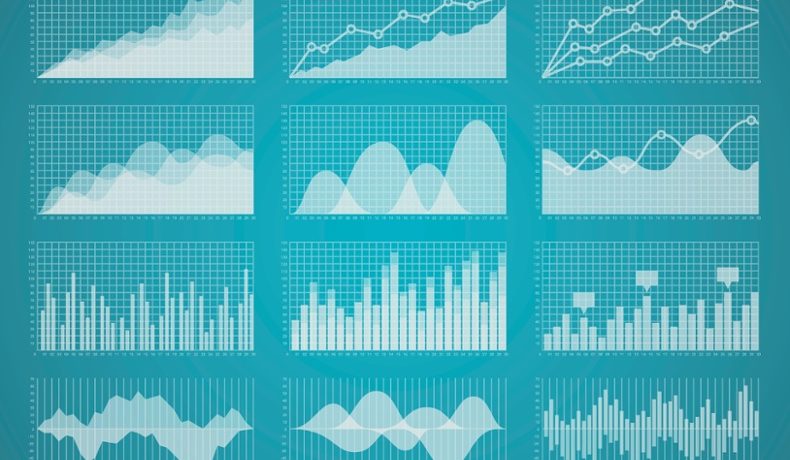


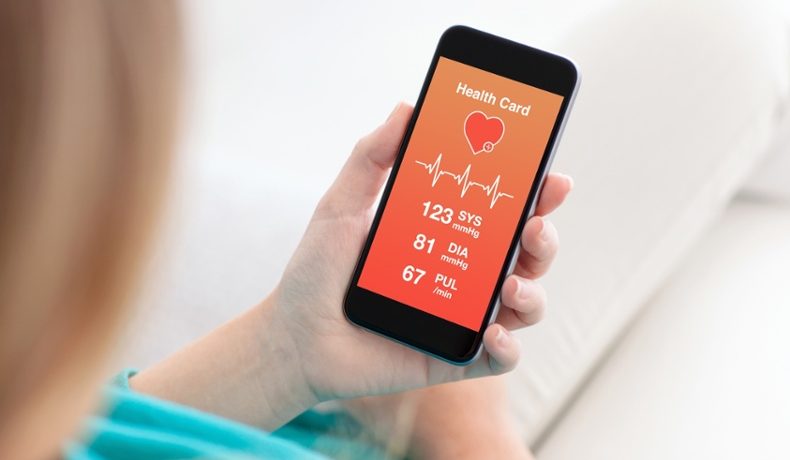


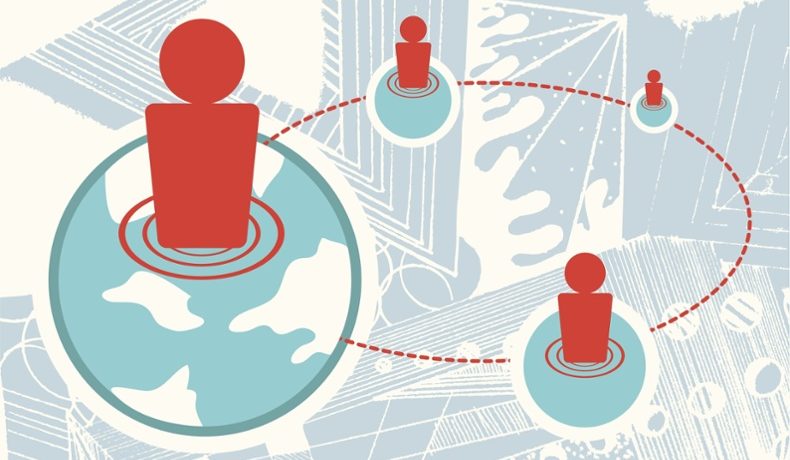
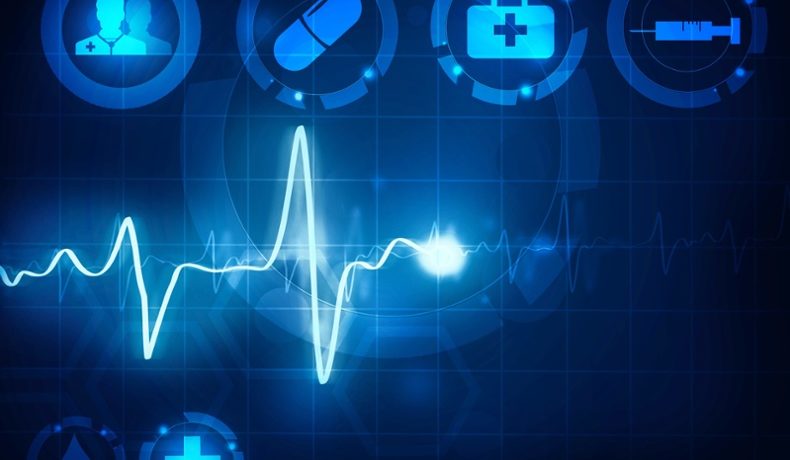





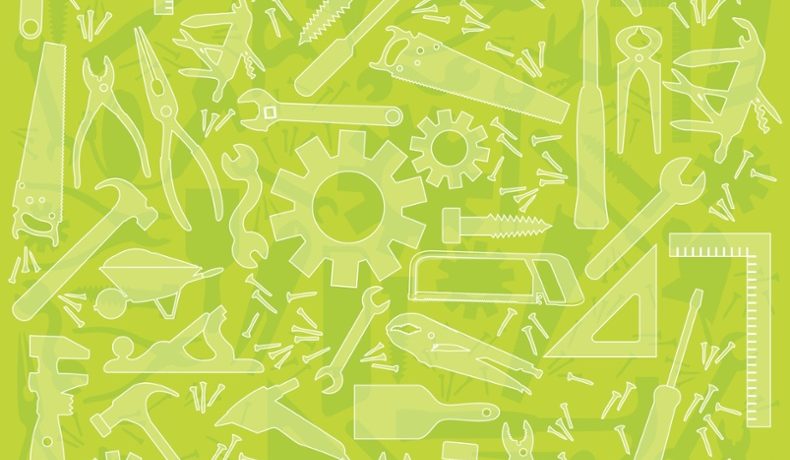


Recent Comments